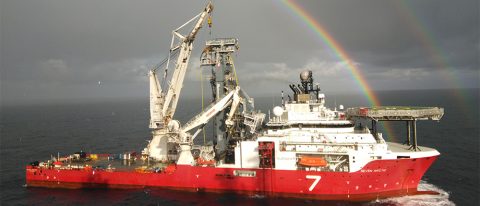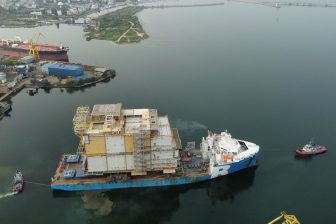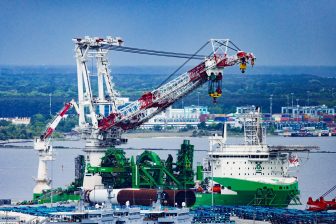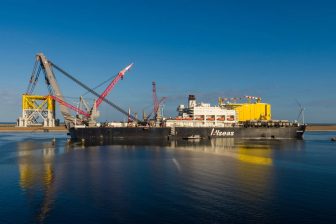
Subsea7’s Seven Arctic to begin work on Sakarya Gas Field
Subsea7’s Seven Arctic construction vessel has entered the Bosporus Strait, on the way to the Black Sea. There, the vessel will begin work on the Sakarya Gas Field Development Project in Türkiye.
In the next three months, the heavy construction / flex-lay vessel will be used to install subsea oil and gas hardware including manifold structures, piles, production flexibles, and 140 kilometres of umbilical in water depths of up to 2,2 kilometres. The gas field will eventually be connected to the Filyos Natural-gas Processing Plant, in the port of Filyos in Zonguldak Province.
The Seven Arctic
The Seven Arctic measures 162.3 metres in length and 32 metres in breadth. It has a gross tonnage of 23 ,85 tonnes. It has a large back deck and underdeck carousels to perform heavy construction and flex-lay scopes simultaneously, with a total deck area of 2,600 square metres. It also has a 1,000t AHC offshore crane with multiple modes for topside and subsea lifting. With a DP3 classification, it is suitable for worldwide operations in water depths up to 3,000 metres.
A new Energy Storage System
Subsea7 also announced at the beginning of the month, that the Seven Arctic is to be equipped with a new energy-saving and storage system. It will hybridise the vessel which currently has a total installed power of 27 MW. The ship will be equipped with a containerised battery room and shore power. It is estimated that a reduction of 5,000 tons of CO2 emissions is expected. The electrical integrator specialist in Dynamic Positioning (DP) vessels, Bakker Sliedrecht, will supply and fit the vessel with the new Energy Storage System.
Stuart Smith, Vice President of Asset Development at Subsea7 stated: “We are very pleased to continue our relationship with Bakker on this contract which will hybridise Seven Arctic. This represents an important milestone in our sustainability programme to reduce our C02 emissions.”
Bas Oskam, Director Sales at Bakker Sliedrecht added: “The Energy Storage System can work with any battery or storage type. The control system is designed with maximum autonomy in mind, allowing for integration with different existing power and vessel management systems on board. This makes the system very suitable to apply in existing vessels.”
You just read one of our premium articles free of charge
Register now to keep reading premium articles.




